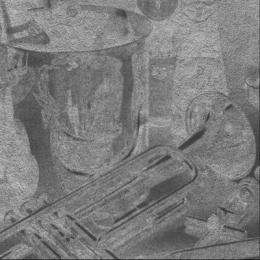How white is a paper?

Whiter paper and better color reproduction are examples of important competitive advantages on an international market. But how white is a paper? And why do vacation photos turn out so dark if you don't buy expensive photo paper? Per Edström at Mid Sweden University has attracted international attention for his research, which has resulted in a new generation of computational tools for simulation of light in paper and print.
Whiteness is a fundamental property of paper. But what is whiteness exactly, how does it arise, and how do you measure whiteness? How difficult can it really be to produce good color prints?
Per Edström pursues research on mathematical modeling and scientific computing. His model is replacing an old model that has been used by the paper and printing industries since the 1930s.
"Light that hits paper penetrates a bit. Some of it is absorbed and disappears, while some scatters in other directions," says Per Edström. "This is affected by fibers and fillers in the paper, and by various additives and ink. This is a rather complex process that gives paper its visual appearence. Tiny constituents in the paper provide the light with many surfaces to scatter against, and this helps create a lighter paper. Ink, on the other hand, absorbs light of different wavelengths, producing color. The total impression is also dependent on how all of the components in the paper are distributed, for example, how the ink penetrates into the paper. Finally, the color experience depends on how the eye and the brain interpret the visual impression, all of which means that it is not so simple to understand these phenomena in detail."

Per Edström has delved deeply into numerical solution methods for systems of coupled integro-differential equations. There are many applications for this, one of which is to describe how light interacts with paper and print to produce a visual experience.
"I like to challenge my students with a little contest at the end of a lecture on whiteness," says Per Edström. "They have fifteen minutes, and the student who submits the whitest paper will win a prize. Even though I have had many enthusiastic students, I have yet to award a prize. Contact me if you want to know why. And how white is a piece of paper anyway?"
Source: Swedish Research Council (news : web)

















